Anyone else mourning the end of summer?
I know the autumn equinox is only a few weeks away, but it sure feels like fall in Alaska. The lush green mountains are quickly turning brown and as I move my foraging efforts to the last of the blueberries and the (finally ripening) lingonberries, I reflect on all the fantastic wild food I foraged this summer.
I’ve written about the challenges of eating clean in a rural area and the joys of getting lost in “Berry Picking World.” I’ve also shared recipes for treats using local ingredients, like my Wild Alaskan Salmon Cakes and Fiddlehead Quiche. Or maybe you’ve been following the foraging photos I post on my Facebook page.
While it’s impossible to truly understand what it’s like to live (and eat) up in Alaska without actually residing here, I can at least try.
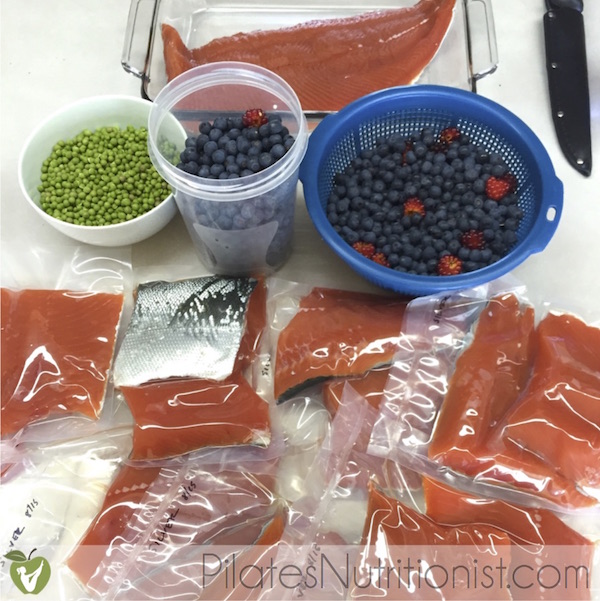
Foraging for wild peas in Alaska
One of the foods I enjoyed this summer was the wild peas that grow along the coastline, which most people call “beach peas.” I first read about them in a few of my wild plant books (this one is my fave) and never got around to hunting them down – until this August.
I actually thought I might be a bit too late to harvest, since some books suggest you pick these in early summer while the pods are still tender and edible. Much to my surprise, even though some of the pods were already turning reddish/brown, the peas were perfectly green on the inside.
Wild peas are smaller and less sweet than cultivated green peas (just like all wild plants or fruit), but they are pretty tasty nonetheless. I also may have harvested them a bit late, so some of the sugars had converted to starch as the plant prepared to dry them out and release them to grow next year’s crop.
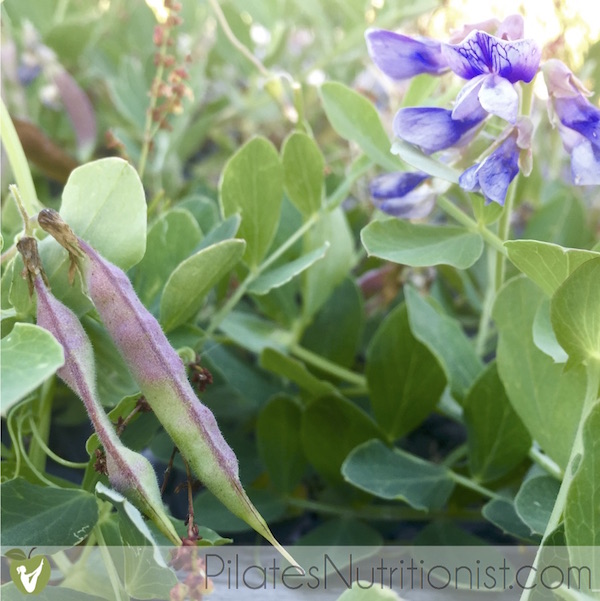

But I heard legumes are unhealthy?!
Now, if you follow the real food or Paleo movement closely, you might be questioning my choice to eat legumes. The Paleo Police are probably preparing for warfare because – gasp – legumes contain lectins, phytic acid, and FODMAPs (ironically, so do a lot of plant foods that are bonafide Paleo staples).
Don’t get me wrong, legumes are not a staple food in my diet, but I do enjoy them on occasion and so did the native people from this area. There’s even evidence that Neanderthals ate legumes, not that I attempt to recreate that way of eating. (PNAS, 2010)
Given that most food needs to be shipped thousands of miles to make it up here, I’d argue wild peas are a heck of a lot more “Paleo” than the plantains shipped from central America, but I digress.
There may also be some foraging buffs reading this who have heard that wild peas are poisonous, however that doesn’t seem to hold up to scientific (and historic) scrutiny, unless you’re left in a starvation situation and wild peas make up 30% or more of your diet for an extended period of time. In that case, your health will suffer.
One or two bowls of Wild Pea and Kale Soup during the short harvesting season is perfectly safe (and delicious). Plus, preparing the peas with bone broth helps provide amino acids that may be missing from legumes and also improves their digestibility.
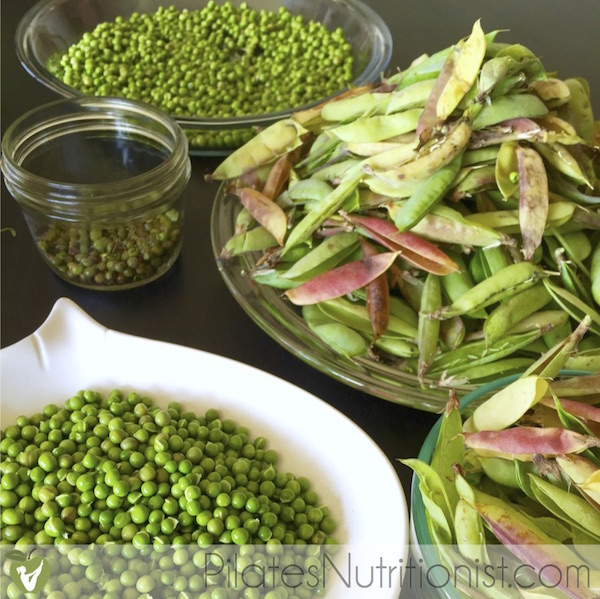
If you don’t have wild peas…
If you don’t have access to wild peas, you can substitute fresh or frozen green peas in the following recipe. You may need to adjust the salt to taste (same goes if your bone broth is already salted – mine was not yet seasoned).
Minus the salt, this entire recipe was prepared with local ingredients – the foraged peas, kale from my garden, wild sorrel (that volunteered in my garden), and bone broth made from the bones of the grass-fed cow raised on a nearby island (I’m not kidding. This cow lived its entire life on a remote Alaskan island!).
I hope you’ll give this simple 4-ingredient recipe for Wild Pea and Kale Soup a try!
Wild Pea and Kale Soup
- 2 cups raw wild peas, shelled (or use frozen green peas)
- 2 cups unsalted, homemade bone broth (I used grass-fed beef bone broth with the fat - see notes)
- ½ tsp sea salt
- 3 leaves lacinato kale
- optional, leftover slow cooked beef roast
- optional, wild sorrel leaves for garnish
Instructions
-
In a medium pot, bring bone broth to a gentle boil. Add peas and cook for 10 minutes.
-
Add kale and salt. Cook for an additional 5 minutes.
-
Puree soup (I like to use an immersion blender) and serve with optional toppings.
Recipe Notes
Here's a tutorial for making bone broth.
I kept this recipe simple – mostly because I was curious if such a basic and quick soup would actually taste good – and lo and behold – it did! By all means, you’re welcome to amp up the spices, saute some onion or leeks before adding the other ingredients, or top with with a nice dollop of creme fraiche.
I chose to turn this into a meal by topping this with some leftover grass-fed beef roast. I also garnished with wild sorrel, which adds a nice lemony astringency that balances out the flavors quite well. If you don’t have sorrel handy, something that’s a bit sour could do the same, such as lemon juice, creme fraiche, or a teeny bit of vinegar.
Now I’d love to hear from you.
What local or foraged foods have you enjoyed this summer? Tell me about it in the comments below!
Until next week,
Lily
PS – If you’re curious about what it’s like to eat clean when you live in a rural area, like Alaska, read this post. For more on the benefits of choosing grass-fed beef (and why it’s most certainly worth the money), read this.


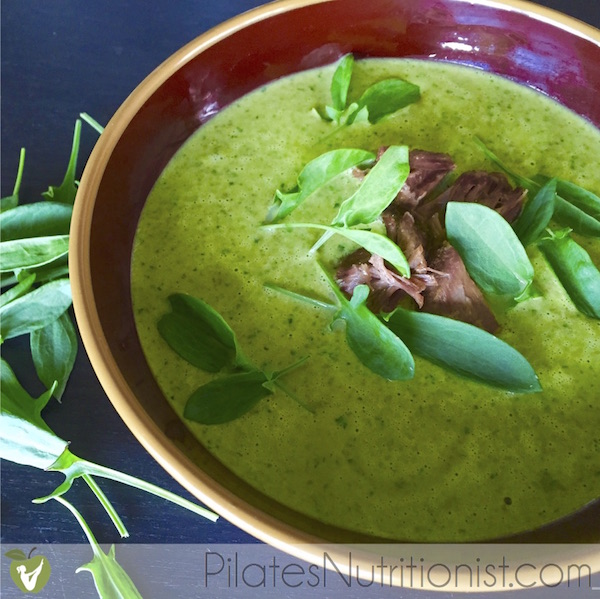
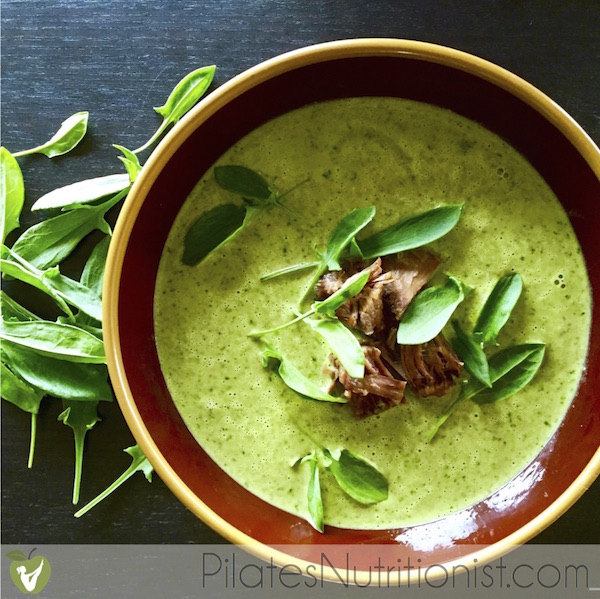









Lily, you have me drooling at the photos here! I just love your blog. And that soup looks to die for!
This summer, I’ve been enjoying fresh peaches, tomatoes, and greens from our local farmers market. I’ve even branched out and tried a few new types of leafy greens from your encouragement to expand my palate. 🙂
Sounds like you’ve had some delicious treats this summer, Ralina. Love that you’re branching out and trying new veggies!